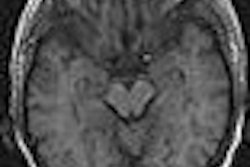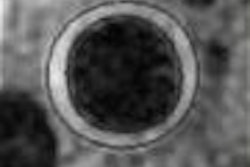WASHINGTON, DC - High-resolution MRI of the median nerve could allow clinicians to rapidly assess trauma victims with peripheral nerve injuries and determine if they'll need surgery, according to a poster presentation Wednesday at the American Academy of Orthopaedic Surgeons (AAOS) meeting.
Peripheral nerve repairs performed within six weeks of injury usually have much better outcomes than those performed later, noted lead author Dr. Archie Heddings from Kansas University Medical Center in Kansas City. At present, there are no diagnostic techniques for early detection of traumatic peripheral nerve injuries, he added.
"For the approximate 2% to 5% of trauma victims who come in with peripheral nerve injuries, (MRI) could provide an opportunity to know clearly, in their postinjury phase, how severe their nerve injuries are and whether or not they'll need surgical intervention," he said.
However, it may be a while before high-resolution MR will be available in a clinical setting to evaluate these injuries. "This procedure is very clinically demanding and quite cumbersome. It needs to be made more practical, and we do need to prove to ourselves that this can be utilized on a broader scale," Heddings cautioned.
For this experimental study, Heddings and colleagues developed imaging protocols on a 9.4-tesla research scanner. They visualized the microstructure of the human median nerve in four fresh-frozen cadaver arms. The nerves were then damaged and examined with the same 9.4-tesla scanner utilizing ex-vivo and in-vivo imaging protocols.
They reported that they were able to see the disruption of fascicles, discontinuity of the perineurium, and internal microstructures in some of the damaged nerve segments.
Heddings said the next phase of his research will be carried out on an 8-tesla research scanner and eventually moved to a more clinically friendly 3-tesla scanner.
"These techniques were developed on a research scanner because it's easier to do that way," he said. "Now that they've been developed, we know parameters need to be set in order to visualize nerves. It's realistic that with the appropriately designed coils, this could be performed on a 3-tesla scanner."
By Jerry Ingram
AuntMinnie.com contributing writer
February 23, 2005
Related Reading
3-tesla MR enhances, and likely advances, orthopedic imaging, February 22, 2005
The 3-tesla MRI swap: Why it's not a simple upgrade, January 27, 2005
Copyright © 2005 AuntMinnie.com



.fFmgij6Hin.png?auto=compress%2Cformat&fit=crop&h=100&q=70&w=100)




.fFmgij6Hin.png?auto=compress%2Cformat&fit=crop&h=167&q=70&w=250)











